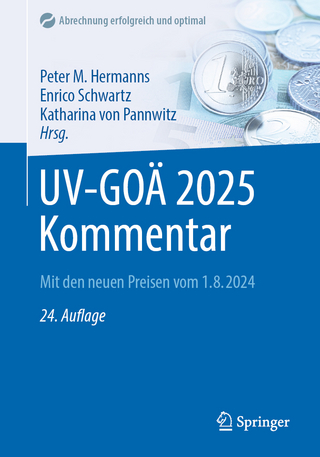
Crisis Standards of Care
A Toolkit for Indicators and Triggers
Seiten
2013
National Academies Press (Verlag)
978-0-309-28552-0 (ISBN)
National Academies Press (Verlag)
978-0-309-28552-0 (ISBN)
Disasters and public health emergencies can stress health care systems to the breaking point and disrupt delivery of vital medical services. This book examines indicators and triggers that guide the implementation of crisis standards of care.
Disasters and public health emergencies can stress health care systems to the breaking point and disrupt delivery of vital medical services. During such crises, hospitals and long-term care facilities may be without power; trained staff, ambulances, medical supplies and beds could be in short supply; and alternate care facilities may need to be used. Planning for these situations is necessary to provide the best possible health care during a crisis and, if needed, equitably allocate scarce resources.
Crisis Standards of Care: A Toolkit for Indicators and Triggers examines indicators and triggers that guide the implementation of crisis standards of care and provides a discussion toolkit to help stakeholders establish indicators and triggers for their own communities. Together, indicators and triggers help guide operational decision making about providing care during public health and medical emergencies and disasters. Indicators and triggers represent the information and actions taken at specific thresholds that guide incident recognition, response, and recovery. This report discusses indicators and triggers for both a slow onset scenario, such as pandemic influenza, and a no-notice scenario, such as an earthquake.
Crisis Standards of Care features discussion toolkits customized to help various stakeholders develop indicators and triggers for their own organizations, agencies, and jurisdictions. The toolkit contains scenarios, key questions, and examples of indicators, triggers, and tactics to help promote discussion. In addition to common elements designed to facilitate integrated planning, the toolkit contains chapters specifically customized for emergency management, public health, emergency medical services, hospital and acute care, and out-of-hospital care.
Table of Contents
Front Matter
Summary
1: Introduction
2: Indicators and Triggers
3: Toolkit Part 1: Introduction
4: Toolkit Part 2: Emergency Management
5: Toolkit Part 2: Public Health
6: Toolkit Part 2: Behavioral Health
7: Toolkit Part 2: Emergency Medical Services
8: Toolkit Part 2: Hospital and Acute Care
9: Toolkit Part 2: Out-of-Hospital Care
Appendix A: Glossary
Appendix B: Open Session Agenda
Appendix C: Committee Biosketches
Disasters and public health emergencies can stress health care systems to the breaking point and disrupt delivery of vital medical services. During such crises, hospitals and long-term care facilities may be without power; trained staff, ambulances, medical supplies and beds could be in short supply; and alternate care facilities may need to be used. Planning for these situations is necessary to provide the best possible health care during a crisis and, if needed, equitably allocate scarce resources.
Crisis Standards of Care: A Toolkit for Indicators and Triggers examines indicators and triggers that guide the implementation of crisis standards of care and provides a discussion toolkit to help stakeholders establish indicators and triggers for their own communities. Together, indicators and triggers help guide operational decision making about providing care during public health and medical emergencies and disasters. Indicators and triggers represent the information and actions taken at specific thresholds that guide incident recognition, response, and recovery. This report discusses indicators and triggers for both a slow onset scenario, such as pandemic influenza, and a no-notice scenario, such as an earthquake.
Crisis Standards of Care features discussion toolkits customized to help various stakeholders develop indicators and triggers for their own organizations, agencies, and jurisdictions. The toolkit contains scenarios, key questions, and examples of indicators, triggers, and tactics to help promote discussion. In addition to common elements designed to facilitate integrated planning, the toolkit contains chapters specifically customized for emergency management, public health, emergency medical services, hospital and acute care, and out-of-hospital care.
Table of Contents
Front Matter
Summary
1: Introduction
2: Indicators and Triggers
3: Toolkit Part 1: Introduction
4: Toolkit Part 2: Emergency Management
5: Toolkit Part 2: Public Health
6: Toolkit Part 2: Behavioral Health
7: Toolkit Part 2: Emergency Medical Services
8: Toolkit Part 2: Hospital and Acute Care
9: Toolkit Part 2: Out-of-Hospital Care
Appendix A: Glossary
Appendix B: Open Session Agenda
Appendix C: Committee Biosketches
1 Front Matter; 2 Summary; 3 1: Introduction; 4 2: Indicators and Triggers; 5 3: Toolkit Part 1: Introduction; 6 4: Toolkit Part 2: Emergency Management; 7 5: Toolkit Part 2: Public Health; 8 6: Toolkit Part 2: Behavioral Health; 9 7: Toolkit Part 2: Emergency Medical Services; 10 8: Toolkit Part 2: Hospital and Acute Care; 11 9: Toolkit Part 2: Out-of-Hospital Care; 12 Appendix A: Glossary; 13 Appendix B: Open Session Agenda; 14 Appendix C: Committee Biosketches
| Verlagsort | Washington |
|---|---|
| Sprache | englisch |
| Maße | 210 x 254 mm |
| Themenwelt | Medizin / Pharmazie ► Gesundheitswesen |
| ISBN-10 | 0-309-28552-6 / 0309285526 |
| ISBN-13 | 978-0-309-28552-0 / 9780309285520 |
| Zustand | Neuware |
| Haben Sie eine Frage zum Produkt? |
Mehr entdecken
aus dem Bereich
aus dem Bereich
Grundlagen, Umsetzung, praktische Hilfen
Buch | Softcover (2024)
Kohlhammer (Verlag)
39,00 €
Mit den neuen Preisen vom 1.8.2024
Buch | Softcover (2025)
Springer (Verlag)
79,99 €
Eine Einführung in Struktur und Funktionsweise
Buch | Hardcover (2021)
Hogrefe AG (Verlag)
38,00 €


